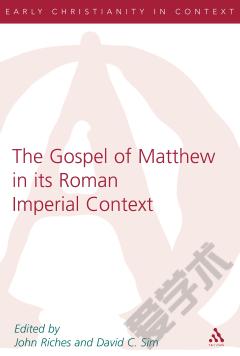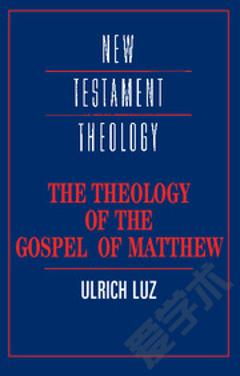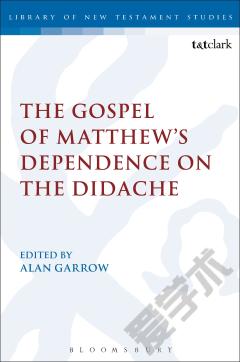The Gospel of Matthew in its Roman Imperial Context
The Gospel of Matthew in Its Roman Imperial Context, edited by John K. Riches and David C. Sim. Early Christianity in Context. London: TT second, the voracious extraction of economic resources; and third, an ideology legitimating these processes conveyed by discourses of various kinds" (p. 10). Against this backdrop of assertions, Esler surveys the history of the interaction between Rome and the Judeans from 63 B.C.E. onward. Focusing especially on apocalyptic (esp. 4 Ezra, 2 Baruch, and the Apocalypse of Abraham) and a rather tiny selection of rabbinic texts, Esler asserts that these Jewish groups were painfully aware of the heavy taxation, of the military iron grip of Roman power, and of the public legitimation of these processes but displayed a vibrant confidence that one day Rome would be overthrown. Their discourse was largely "reliant on the myth of the four beasts in Daniel 7, to counter that of Rome" (p. 33). Although Esler does not specifically say so, the relevance of this chapter to the theme of the book depends on the assumption that Matthew's community is akin to the Jewish community, or, alternatively, that the latter may serve as a foil for the former. James S. McLaren ("A Reluctant Prophet: Josephus and the Roman Empire in Jewish War") argues, against prevailing opinion, that Josephus belonged neither to those who totally accepted Roman rule (which is where most scholars place him) nor to those who passionately rejected that rule, like the sicarii. McLaren finds evidence in Jewish War to support his conclusion that, while Josephus felt it was the part of wisdom to submit to Rome because its power was unassailable, he left plenty of clues that he was "not entirely happy with the way things had worked out" (p. 48). In other words, McLaren's argument is nicely focused and designed to show that even Josephus was deeply conflicted about the category of empire. By contrast, Dennis C. Duling ("Empire: Theories, Methods, Models") paints with a broad brush. After very briefly surveying a few theories regarding the emergence of empires, he summarizes "the vertical dimension" (pp. 54-60) of the Roman Empireits social ranking-and then its "horizontal dimension" (pp. 60-64), that is, the structures of imperial control, with elites living at the periphery of the empire in close relationship with the elites at the core and benefiting enormously from that relationship. â¦
{{comment.content}}








 京公网安备 11010802027623号
京公网安备 11010802027623号